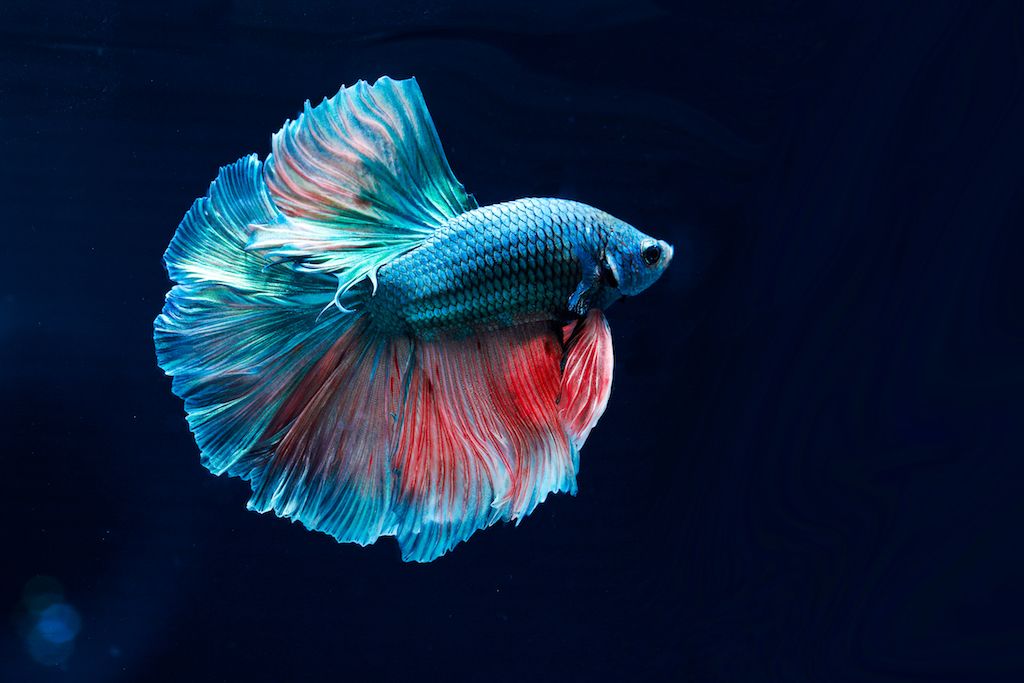Breeding Betta Fish: a Comprehensive Step-By-Step Guide to Successfully Raising Baby Bettas From Eggs to Their Adult Years
Reproducing Betta fish is a meticulous endeavor that requires careful planning and implementation to guarantee the effective growth of fry from eggs to mature fish. As the male Betta vigilantly constructs a bubble nest and guards the valuable eggs, the succeeding phases of treatment and change need interest to information and understanding of finest methods.

Selecting Breeding Pairs
When getting started on the trip of breeding Betta fish, selecting the appropriate reproduction sets is important to achieving desirable characteristics and a healthy and balanced family tree - betta fish. The primary step in this process is to identify the details qualities you wish to boost or preserve, such as shade, fin type, and physique. It is vital to select genetically diverse sets to avoid inbreeding, which can bring about health and wellness issues and unfavorable characteristics
Examine potential breeding candidates meticulously. A healthy and balanced male Betta ought to exhibit vibrant colors, an energetic behavior, and well-formed fins, while the woman must likewise present lively pigmentation and a rounded tummy, showing readiness for spawning. Observing the character of both fish is vital, as aggressive or extremely shy people may not breed effectively.
Keeping documents of the parent fish's ancestry can help you track genetic qualities and possible concerns. Ultimately, spending time in the selection procedure will substantially boost the chance of generating strong, vibrant spawn that meet your reproduction objectives.
:strip_icc()/siamese-fighting-fish-bettas-1378308-hero-f459084da1414308accde7e21001906c.jpg)
Preparing the Reproduction Tank
Producing an optimum reproduction environment is a crucial step after selecting appropriate sets for Betta fish. The breeding storage tank should be especially made to give comfort and promote the natural reproduction actions of the fish. Start with a container dimension of at the very least 10 gallons to ensure ample area for both the male and female Bettas.
Keep a gentle filtering system to keep the water clean while staying clear of solid currents that can emphasize the fish. Furthermore, an air stone can be contributed to supply oxygenation without interfering with the water surface area also much.
Temperature level law is critical; go for a secure array of 78-82 ° F(25-28 ° C) utilizing a trusted heater. The pH degree must be preserved in between 6.5 and 7.5, and regular water adjustments are needed to make sure high water high quality.
Include drifting plants or spawning mops to create hiding places for the woman, while likewise motivating bubble nest structure by the male - betta fish. Lastly, ensure the tank is totally free from sharp decorations and any kind of potential hazards, as the welfare of the fish need to always be focused on throughout this important phase of reproduction.
The Breeding Refine
Commonly, the reproducing procedure for Betta fish involves a series of unique and visible habits that show preparedness for recreation. The male Betta starts by developing a bubble nest at the water's surface area, which functions as a website for the fertilized eggs. This nest is important, as it provides a risk-free environment for the eggs till they hatch out.
Once the nest is developed, the male will present recommended you read courtship habits, such as flaring his fins and exhibiting vivid colors to bring in the female. The woman, upon noticing the male's readiness, will react by presenting vertical stripes along her body, signifying her receptiveness.
The fed eggs then fall to the bubble nest, where the male carefully collects and returns them to the nest. Following this, the male assumes responsibility for securing the nest and guaranteeing the safety of the eggs until they hatch out, normally within 24-36 hours.
Caring for Betta Fry
Looking after Betta fry needs mindful attention to their setting and nutrition to make certain healthy development and development. After hatching, Betta fry are exceptionally little and vulnerable, requiring a stable and clean environment. Maintaining a water temperature level in between 78 ° F and 80 ° F is important, as Betta fry thrive in cozy conditions. In addition, ensure that the water is devoid of dangerous toxins; routine water adjustments of 10-20% are suggested to keep optimal water high quality.
Feeding Betta fry is similarly essential. Feed them little amounts several times a day, being careful not to overfeed, which can lead to water quality click this site issues.
Transitioning to Adult Bettas
As Betta fry mature, transitioning them to adult Bettas is an important stage that needs cautious administration of their atmosphere and social communications. This procedure generally begins when the fry get to around 6 weeks old, whereupon they can be slowly presented to an extra structured living atmosphere.
To facilitate this shift, it is necessary to ensure that the water parameters-- such as temperature level, pH, and ammonia levels-- are optimal and secure. Grown-up Betta fish thrive in cozy water (around 78-80 ° F) with a pH of 6.5 to 7.5. Progressively adapt the fry to these conditions to reduce stress and anxiety.
Social communications are an check my blog additional vital aspect; male Bettas are infamously territorial and hostile. It is suggested to separate men right into individual containers as they grow. Female Bettas can be housed with each other, but treatment ought to be required to keep track of for signs of aggression.
Additionally, dietary changes ought to be made as the fry expand. Incorporate high-quality pellets and live foods to sustain their development and wellness. By handling these elements properly, you can promote a successful change to their adult years for your Betta fish.

Conclusion
Successful breeding of Betta fish calls for cautious attention to information throughout the entire procedure, from picking genetically diverse sets to giving ideal care for fry. In addition, a balanced diet and progressive adaptation to grown-up environments are crucial for the development and advancement of Betta fish.